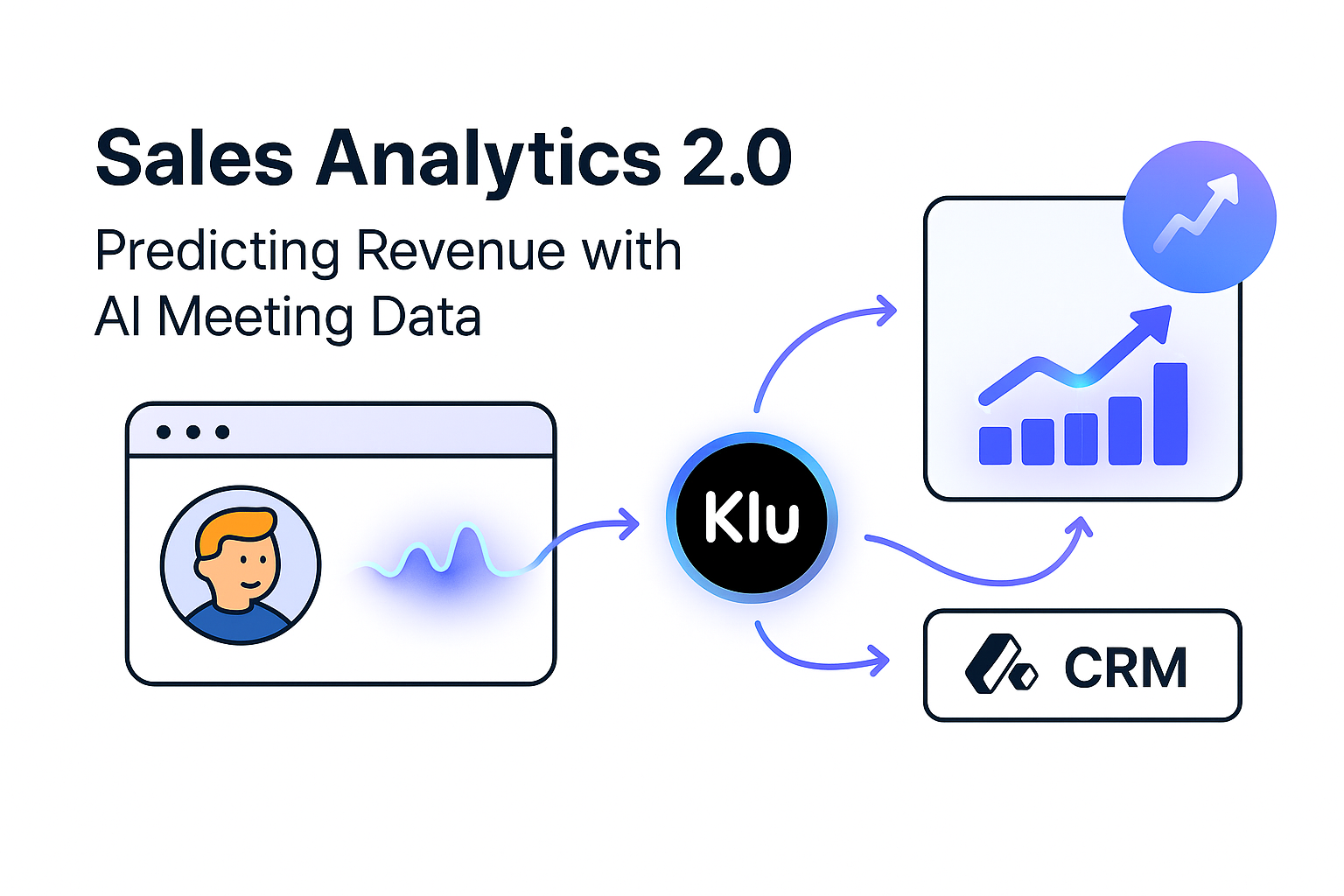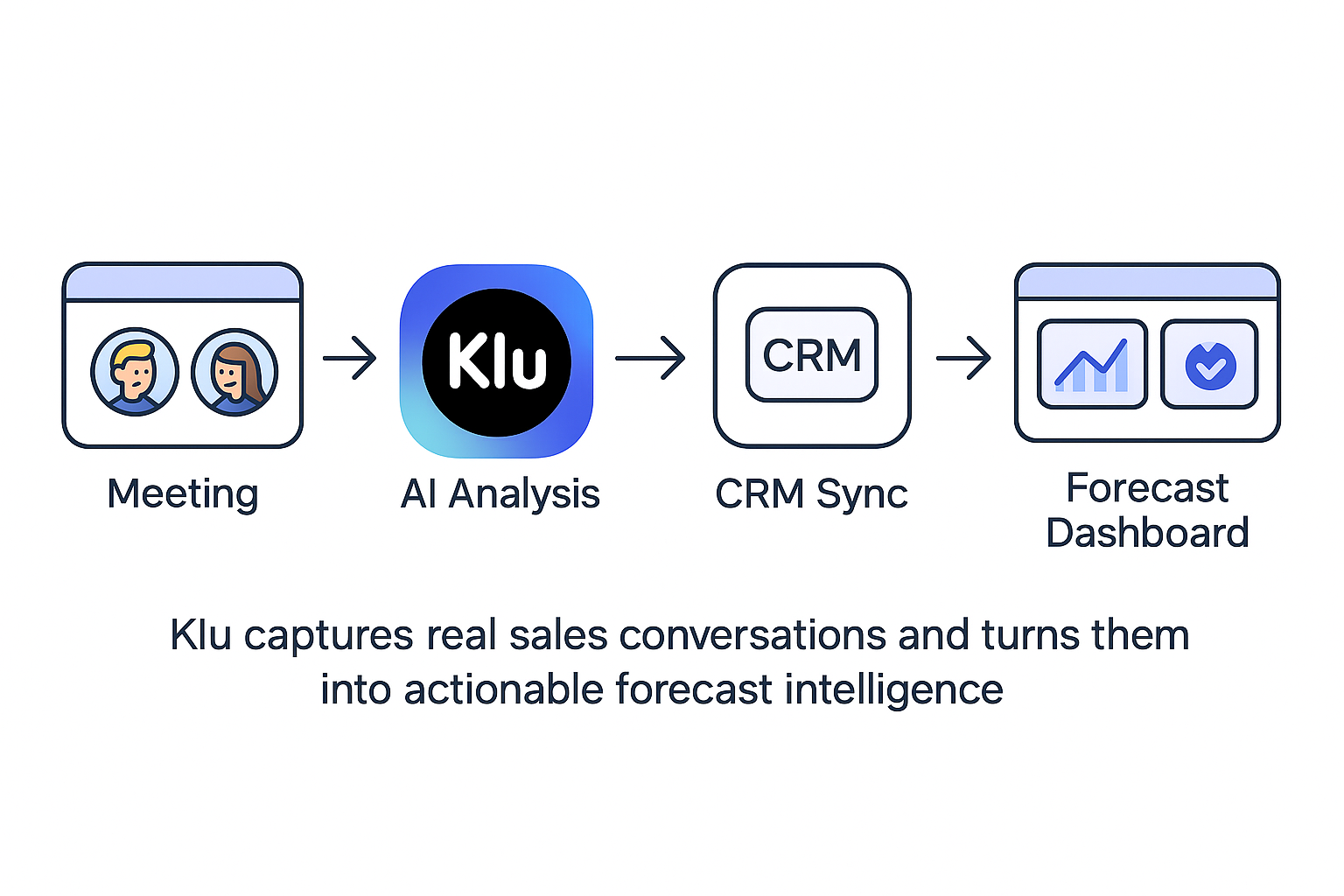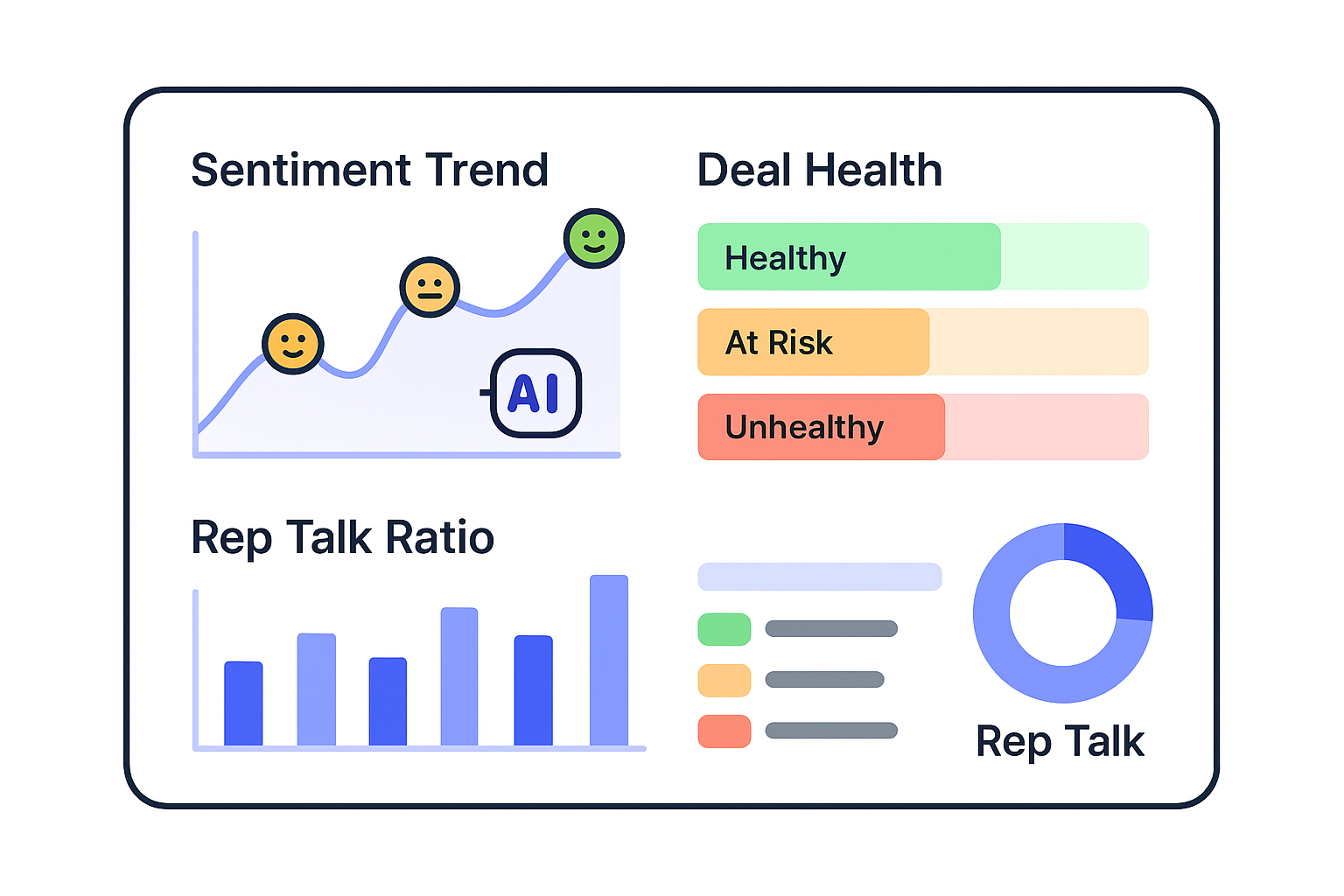 Sami AZ
Sami AZ
Sales forecasting has always been part art and part science. Managers rely on rep updates, pipeline reviews, and gut instinct to project quarterly outcomes. Yet, despite CRM dashboards and spreadsheets, forecasts still go wrong.
In 2025, the reason is clear: data in most CRMs is incomplete, outdated, or purely quantitative. Reps log activities, but not the full context of conversations.
The result? Teams know how many calls they made but not what actually happened in those meetings.
That’s where AI meeting data changes the game. Modern platforms like Klu capture the qualitative story behind every deal, buyer sentiment, engagement tone, commitments, and risks, and turn it into measurable analytics.
This is Sales Analytics 2.0, where forecasting is powered by real conversational intelligence rather than static fields in a CRM.
Despite endless dashboards, many revenue teams still struggle with accuracy. According to Gartner’s 2025 sales analytics report, 58% of companies say their forecasts miss by more than 20%. The reasons are predictable:
AI-powered sales analytics fix this by capturing conversational data at scale. Every call, follow-up, and note becomes a real-time data point feeding predictive models.
Imagine if your forecast reflected what buyers actually said, not just what was marked “In Progress.”
AI meeting data captures:
Klu’s analytics transform these qualitative cues into predictive indicators. If sentiment drops across three calls, or action items remain incomplete, the deal health score automatically declines, alerting sales leaders before the quarter ends.
Here’s how the workflow operates inside Klu for sales teams:

Most CRMs focus on numeric fields: amount, stage, close date. But qualitative meeting data adds emotional and contextual layers that numbers alone can’t reveal.
For example:
By enriching deal data with these signals, revenue leaders get a live, evolving forecast, one that reacts to reality rather than assumptions.

1. Early-Stage Pipeline Health
Klu identifies leads that show weak engagement signals and recommends next steps.
Example: “Prospect has low talk ratio and no follow-up in seven days, send re-engagement email.”
2. Deal Momentum Tracking
AI evaluates whether deal energy is increasing or fading by analyzing tone, timing, and commitments across calls.
3. Manager Coaching
Klu highlights conversations that need review, for example, if a rep dominates 80% of the talk time or misses recurring objections.
4. Account Expansion Opportunities
Success teams use AI meeting insights to identify upsell potential. If clients frequently mention new needs, Klu flags them automatically.
Klu integrates seamlessly with HubSpot, Pipedrive, and Attio, ensuring every insight flows directly into your CRM.
That means:
These integrations turn meeting intelligence into revenue intelligence.
Sales Reps: Spend less time logging updates. AI syncs insights automatically.
Sales Managers: Coach with evidence, not guesswork. Review conversation analytics and follow-through consistency.
Revenue Operations: Gain full-funnel visibility, linking sentiment to pipeline velocity.
Customer Success Managers: Identify churn risks early from client meeting trends.
Each role benefits from actionable data, reducing repetitive admin and improving revenue accuracy.
1. What is Sales Analytics 2.0?
It is the evolution of sales analytics that uses AI meeting data, sentiment analysis, and workflow automation to predict outcomes more precisely.
2. How accurate are AI-based sales forecasts?
They are more dynamic than static models because they update automatically when buyer signals change. Klu’s insights improve accuracy by factoring in tone, engagement, and completion rates.
3. Can I use Klu with my existing CRM?
Yes. Klu integrates with HubSpot, Pipedrive, and Attio for seamless data flow between calls and CRM systems.
4. How does meeting data become analytics?
Each call is transcribed, analyzed for sentiment and keywords, and translated into structured data for reporting.
5. Is the data secure?
Klu uses end-to-end encryption, SOC 2 compliance, and permission controls to ensure all meeting data remains private.
Sales Analytics 2.0 represents a major shift in how teams understand performance. Instead of relying on manual updates or static dashboards, Klu connects directly to the heart of every deal, the conversations.
By analyzing tone, sentiment, and engagement, sales leaders can see which opportunities are heating up or cooling down. Forecasts become dynamic and adaptive, empowering teams to act on insight rather than intuition.
If you want a forecast that reflects real buyer intent, not just CRM fields, it’s time to experience how Klu transforms meeting data into measurable revenue intelligence.
Ready to see how Klu predicts revenue more accurately? Try Klu Free! Connect your meetings and CRM in minutes.